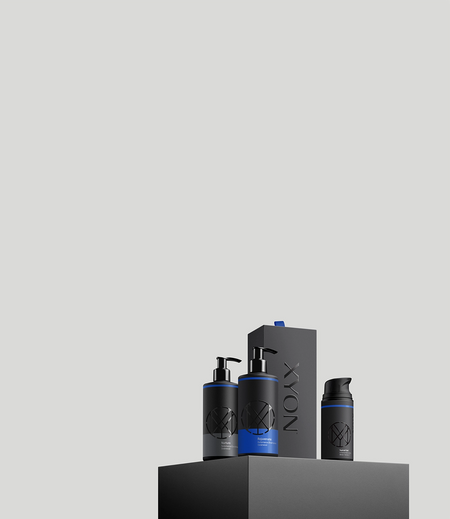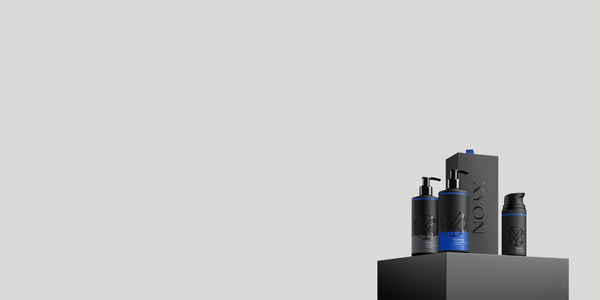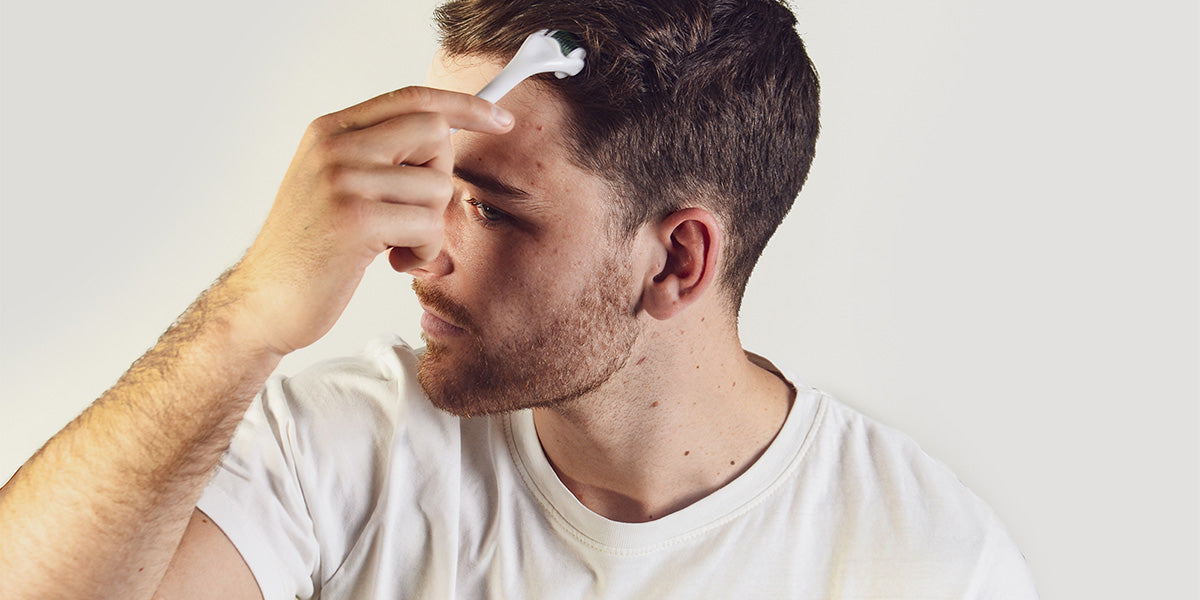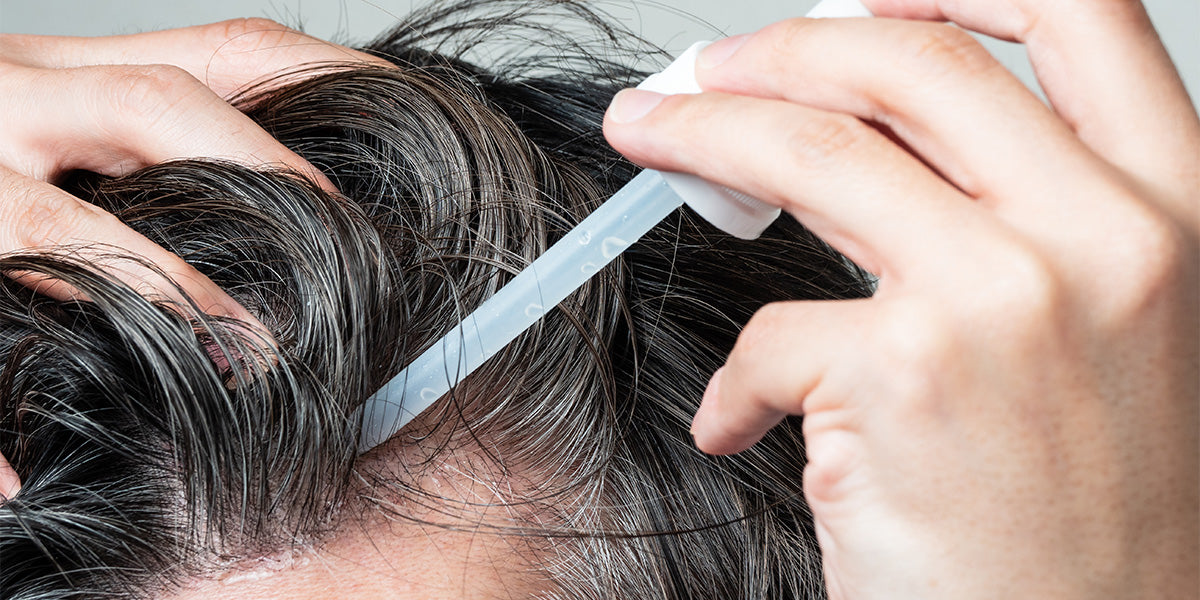If you’ve done some research into your options for treating hair loss, you’ve probably heard of a practice called microneedling. Like mesotherapy, a related procedure involving the use of needles to stimulate cell repair and growth, microneedling has its origins in the clinic and is now being marketed and available as a DIY or at-home treatment. Does it work for hair loss and is it safe to do yourself? We’ll cover the answers to all of these questions and more in this article.
What is microneedling?
Microneedling is a minimally invasive procedure that typically involves using a pen-like device containing hundreds of tiny needles between 0.5mm and 1.5mm long. This device is used to make lots of tiny holes in the top layer of skin. These ‘micro-wounds’ in the targeted layer of skin are believed to help to trigger multiple wound healing mechanisms, some of which are thought to promote hair growth (Gupta et al, 2021).
Some of these mechanisms involve triggering white blood cells to release substances known as growth factors. These substances encourage the growth and repair of existing and new cell structures (Cooper, 2002). As part of the wound healing process, blood vessels also widen, improving the blood circulation and supply of key nutrients to the targeted area of the skin (Lima et al, 2013).


Balding doesn't have to be inevitable.
Get ahead of hair loss with our hair loss solutions and team of hair loss experts.
What's the difference between microneedling and mesotherapy?
Microneedling and mesotherapy are similar procedures recognized in the hair growth space, but there are a few key differences. Mesotherapy involves superficial injections of small doses of pharmaceutical mixtures into the targeted area of the skin. In contrast, microneedling aims to trigger a natural wound-healing response in the skin, by creating very small wounds. Mesotherapy is always completed by a medically trained professional, whereas microneedling has recently been trending as a DIY treatment that you can do yourself (but we don’t recommend this). We will discuss at-home microneedling later in the article.
Can microneedling help hair growth?
Potentially. For hair growth, microneedling likely works in more than one way. Firstly, it appears to enhance the effects of topical hair loss medications, such as minoxidil. Microneedling the areas of the scalp affected by hair loss before using topical medication may boost the amount of active ingredient reaching the hair follicles where it’s needed. One study found that applying topical minoxidil following microneedling was significantly more effective at increasing the total hair count, compared to topical minoxidil alone (Kumar et al, 2018). However, using microneedling alongside topical hair loss medications may impact the amount of active ingredients being absorbed into the bloodstream and the total dose delivered to the skin. For those interested in trying topical medications for hair loss through XYON, we advise against using microneedling with our compounded topical solutions. There is a lack of data looking at the potential risks of this and more research is needed to understand the full impact of microneedling with topical hair loss medications.
Microneedling may also help with hair loss by stimulating the release of growth factors and improving blood flow to the scalp. The superficial damage caused to the skin by microneedling can stimulate the release of growth factors in the layer of skin where hair follicles reside (Dhurat et al, 2013), thus encouraging hair growth. This reaction also appears to enhance the expression of key proteins in hair follicles which encourage cell differentiation within the follicle and proper regulation of the hair growth cycle, all of which promote hair growth (Kim et al, 2016), including an increase of collagen production (Fertig et al, 2021) which may support structures surrounding the hair follicle, indirectly influencing hair follicle growth.
Whilst most research on microneedling for hair loss is focused on how it can be used together with topical treatments, it may potentially work as a stand-alone treatment for hair loss.
Microneedling is also thought to have an impact on the hair growth cycle and may cause hair follicles to re-enter the active growth phase, known as the anagen phase. In this sense the wound healing process also appears to induce the regeneration of hair follicles (Ansell et al, 2011). A study looking at microneedling on its own, found significant improvement in hair growth in people with androgenetic alopecia (male and female pattern hair loss) (Gupta et al, 2021). Longer microneedling treatments appeared to produce better hair growth results, as opposed to undergoing microneedling more frequently, which actually seemed to have a negative effect on total hair count. Potential side effects that have been reported include small amounts of bleeding shortly after the procedure, irritation on the area and itching (Gowda et al, 2021).
It's important to understand that the research surrounding microneedling for hair growth remains in the preliminary stages and there are more clinically proven treatments for hair loss available.
How often should you microneedle for hair growth?
Unfortunately, there is no simple answer. Microneedling for hair growth is a relatively new concept and there doesn't seem to be a consensus on the most optimal frequency of treatment. Theoretically, you should have enough time between each treatment for the area of the scalp to fully heal and any side effects to subside.
Can microneedling for hair loss be done at home?
Technically, yes. But there are risks involved with performing this procedure yourself and we recommend you speak to a medical professional before trying this at home.
The most popular method for microneedling at home involves using a derma roller, which is a rounded device containing lots of tiny needles on the surface that can be rolled over the skin. One of the main risks of using these devices is infection. Making tiny punctures in the skin on the scalp can create gateways for bacteria to enter. The shape of derma rollers makes them difficult to clean and it’s unlikely that you’ll be able to create a sterile-enough environment at home.
For microneedling to affect hair growth, the length of the needles and the pressure applied to the scalp must be precise enough to produce the desired wound-healing response. Typically, the derma rollers you can buy online may not contain the right sized needles and you run the risk of causing damage to your scalp. Applying too much pressure or going over the same area of the scalp too many times can lead to irritation, bleeding and other problems.
For these reasons, we strongly advise that you avoid attempting microneedling on yourself. If you are worried about hair loss, there are other treatment options available that may be more suitable for you.
Takeaway
Microneedling might seem like an easy at-home treatment for hair loss upon an initial google search, but it’s important to consider that it can be a potentially harmful procedure to perform on yourself and may not produce the results you are hoping for. Ultimately, you’ll likely find it more helpful in the long run to speak to a professional about your hair loss. They can provide you with valuable advice about what treatment will be best suited to you and allow you to make more informed decisions when it comes to your hair loss journey.
References
Ansell, D.M., Kloepper, J.E., Thomason, H.A., Paus, R., Hardman, M.J. (2011). Exploring the “Hair growth – wound healing connection”: Anagen phase promotes wound re-epithelialization. Journal of Investigative Dermatology, 131(2), 518-528. https://doi.org/10.1038/jid.2010.291
Cooper, S. (2002). The biology of skin. Journal of The Royal Society of Medicine, 96(2), 109.
Dhurat, R., Sukesh, M.S., Avhad, G., Dandale, A., Pal, A., Pund, P. (2013). A randomized evaluator blinded study of effect of microneedling in androgenetic alopecia: A pilot study. International Journal of Trichology, 5(1), 6-11. https://doi.org/10.4103%2F0974-7753.114700
Fertig, R.M., Gamret, A.C., Cervantes, J., Tosti, A. (2018). Microneedling for the treatment of hair loss? Journal of the European Academy of Dermatology and Venereology, 32(4), 564-569.
Gowda, A., Healey, B., Ezalsdein, H., Merati, M. (2021). A systematic review examining the potential adverse effects of microneedling. Journal of Clinical and Aesthetic Dermatology, 14(1), 45-54.
Gupta, A.K., Quinlan, E.M., Venkataraman, M., Bamimore, M.A. (2021). Microneedling for hair loss. Journal of Cosmetic Dermatology, 21(1), 1-414. https://doi.org/10.1111/jocd.14525
Lima, D.A.D., Lima, D.A.M., Takano, M. (2013). Microneedling: experimental study and classification of the resulting injury. Surgical & Cosmetic Dermatology, 5(2), 110-114.
Kim, Y.S., Jeong, K.H., Kim, E.J., Woo, Y.J., Kim, B.J., Kang, H. (2016). Repeated microneedle stimulation induces enhanced hair growth in a murine model. Annals of Dermatology, 28(5), 596-592. https://doi.org/10.5021%2Fad.2016.28.5.586
Kumar, M.K., Inamadar, A.C., Palit, A. (2018). A randomized controlled, single-observer blinded study to determine the efficacy of topical minoxidil plus microneedling versus topical minoxidil alone in the treatment of androgenetic alopecia. Journal of Cutaneous and Aesthetic Surgery, 11(4), 211-216. https://doi.org/10.4103%2FJCAS.JCAS_130_17




